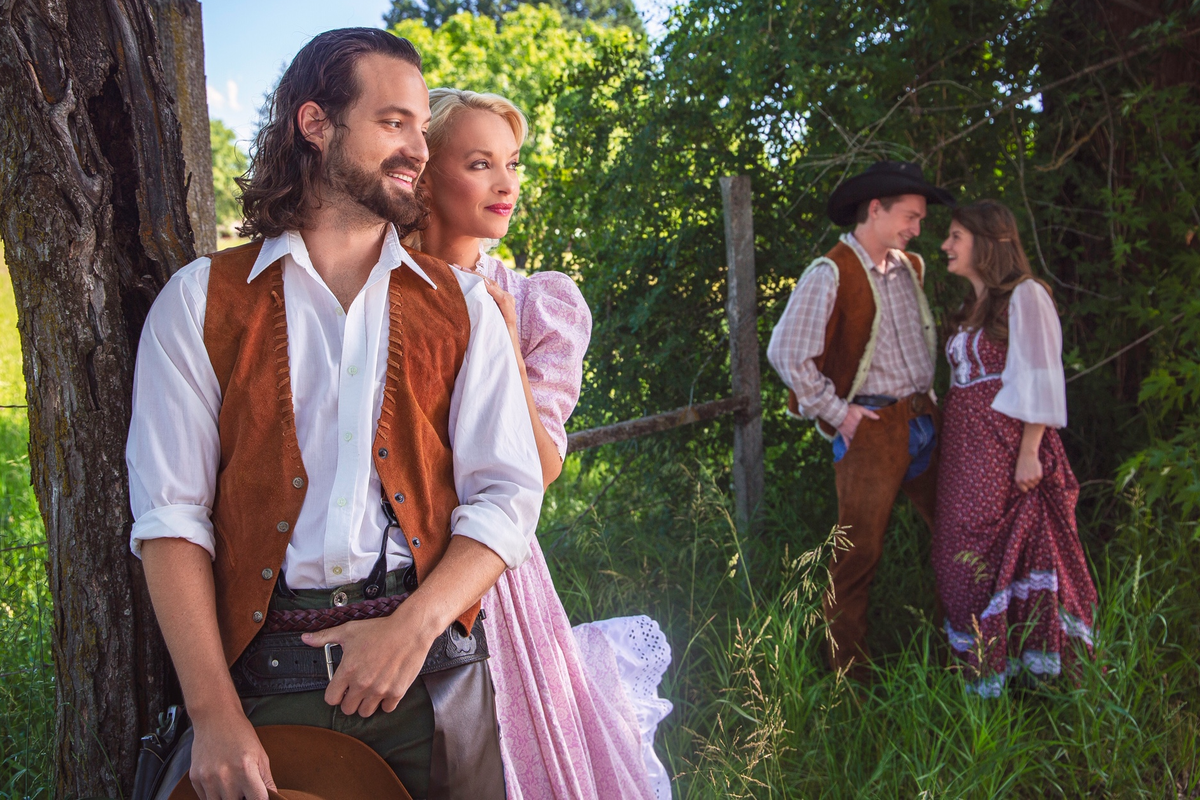Review: ‘Oklahoma!’ is a classic for modern audiences

For the modern American masses, a play like “Oklahoma!” might not hold wide appeal without promises of stark, modernizing changes. That was the route taken with its recent Broadway revival, and that’s the route taken by most new productions of Western genre stories in television and film.
Today’s audiences want their tales of American mythic landscapes to take on a grittier, revisionist sensibility with harder violence and updated political and social themes.
And who can blame them? The average viewer wants, and deserves, something with which they can identify. Technicolor-costumed Western archetypes might no longer suit that need. But isn’t there something to be said for the storytelling roots of American mythos? Is there a middle ground for appreciation of tradition and acknowledgment of contemporary culture?
In Coeur d’Alene Summer Theatre’s production of “Oklahoma!” directed by Stu Cabe, they have found it.
It is evident that Cabe had a distinct vision for the technical and narrative direction of this production. When you decide to take on a revolving stage, you really don’t have any other option but to have a distinct vision.
A revolve is typically used for rotating set pieces, but Cabe’s innovation uses the revolve as an active component in the actors’ movement onstage. When Curley (Nick Szoeke) struts to the opening song “Oh, What a Beautiful Morning,” the dimensions of the stage are no limitation.
As the revolve turns, this cowboy continues his proud, vigorous stride without compromise for space, creating the surreal sensation that the earth of the Oklahoma territory is turning beneath his feet. It’s wonderfully bigger than life, actualizing the wide open spaces of the setting.
The backdrop serves as a perfect complement to the minimalist surrealism of the stage floor. A massive half sun, with the stage as its horizon, stands in front of a white backdrop. Its rays are like the steel blades of a windmill. Between them are projections of a dreamy Midwest sky.
The white backdrop is saturated with colored light, changing throughout scenes to set the tone and atmosphere. This inventive lighting, designed by Courtney Smith, is found throughout the production with endless intention and detail behind the hundreds of lighting cues.
In combination, the whole thing feels as if you’ve peered into a Kinetoscope at a fairground. Upon turning the crank, a shutter blinks as film is pulled in front of the backlight, creating, for your viewing only, an intimate world of tiny figures making dream-like movements with no regard for time or space.
It could not be pulled off without the expert spatial awareness of the actors. Every cast member masterfully maintains organic movement as they perform song and line on the revolve, a true feat for Cabe and choreographer Trigger Weddle.
Looking to the narrative, the modernized direction is revealed in performance nuances.
Szoeke’s Curley is more laid-back and less hulking than that of a typical Western protagonist. Without that classic, unquestioned assertiveness, Szoeke brings Curley down to earth a bit where his motives are more open to investigation than they might have traditionally been. That said, Szoeke maintains all the romance of Curley’s character through strong and authentic vocal performance.
Amy D’Orazi plays Laurey, a farm girl and main romantic interest, and she is a natural in this character. She preserves the genuine innocence of Laurey without sacrificing her complexity and discernment, highlighted by the precarious choices Laurey must navigate throughout the story. D’Orazi displays masterful craft on top of her astounding intonation and control as a vocalist.
Tamara Schupman’s Aunt Eller is timeless. Schupman would be right at home among many favorite character actors of the time “Oklahoma!” was originally produced. Energetic, dynamic and natural, Schupman gives Aunt Eller a rich universality.
Aimee Paxton, an actress I know personally and have worked with on film sets, is a joy to see unleashed on the stage. She exudes abundant energy and charisma as the insatiable Ado Annie. Alongside Tristan Berg, as Will Parker, and Anden J. Leo, as Ali Hakim, the three bring heartening vitality and humor to the production and showcase their skills as comedic performers.
Jackson Bouchard gives haunting depth to the character of Jud Fry, elevating him from an obsessive, threatening antagonist to a character with signs of obscure, internal struggle. The vulnerability Bouchard weaves into Jud is a testament to his confidence and intuition as a performer. His operatic command and power reminds the audience of Jud’s formidable ability for harm.
Playing Laurey in a musical dream sequence, Elizabeth Cook is astounding to watch as she brings together elements of refined choreography and silent expression. The sequence itself serves as a highlight for the technical mastery and detail found in the rest of the play.
The instrumental performances were spot on, with some musicians pulling double duty as ensemble actors. Of note is Jeremy Lynch, who simultaneously plays flawless fiddle and acts, even in complex scenes such as the box social square dance.
Together this cast and crew accomplish a tremendous feat. Not only succeeding in the limitless technical demands of this production, but also in bringing home an American classic to a modern audience.